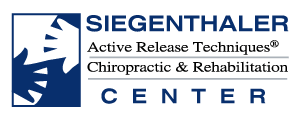The Techniques Behind Active Release Therapy
Posted by drjims on Jul 17, 2013 on The Techniques Behind Active Release Therapy
By Jen Murphy
Active release technique, also known as ART, is a combination of movement and massage to treat pain in ligaments, nerves, tendons, muscles, and other connective tissue in the body, according to practitioners.
Some people admit it can be painful.
“This is quite different from a massage,” says Jessica Tranchina, an Austin, Texas-based ART-certified therapist. “It’s not relaxing, in fact it hurts.” She is usually works on specific muscles rather than the whole body.
P. Michael Leahy obtained a patent for ART in 1990. Dr. Leahy is the team soft-tissue specialist for the Denver Broncos, and the head of the ART treatment team for the North American Ironman Triathlons. Dr. Leahy and his staff in Colorado Springs, Colo., train and certify ART therapists.
Though professional athletes use the technique, people who sit at a desk and suffer from neck, back and shoulder pain can benefit, says Ms. Tranchina.
The idea behind ART is to identify scar tissue on and in between a patient’s muscles. Scar tissue can make muscles shorter and weaker and nerves can become compressed. ART therapists break up the scar tissue by applying pressure with their hands to lengthen the tissue.
Robert Gazso, an ART physiotherapist at Studiomix, a fitness studio in San Francisco, says other types of massage don’t allow for the proper tension on the muscles to break up scar tissue: “We are prying a muscle off of a muscle or a nerve off of a muscle by breaking up the scar tissue with our fingers,” he says.
A. Lynn Millar, a physical-therapy professor at Winston-Salem State University says ART is like deep tissue massage and myofascial release, which treat chronic pain.
“It’s the same principle of breaking up scar tissue so that the muscles move more freely,” she says.

